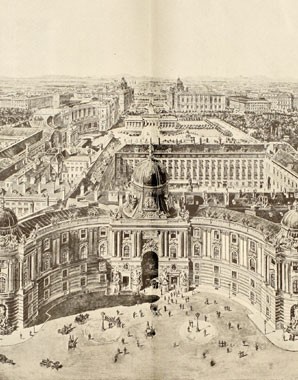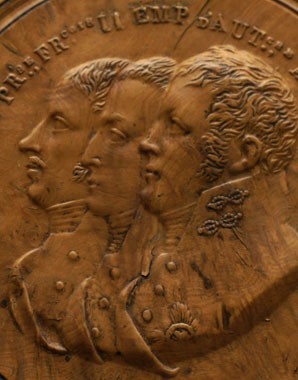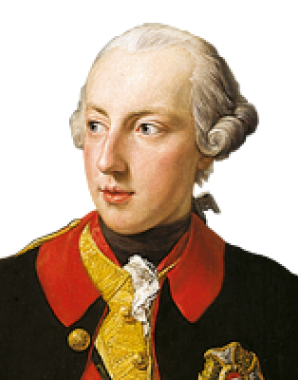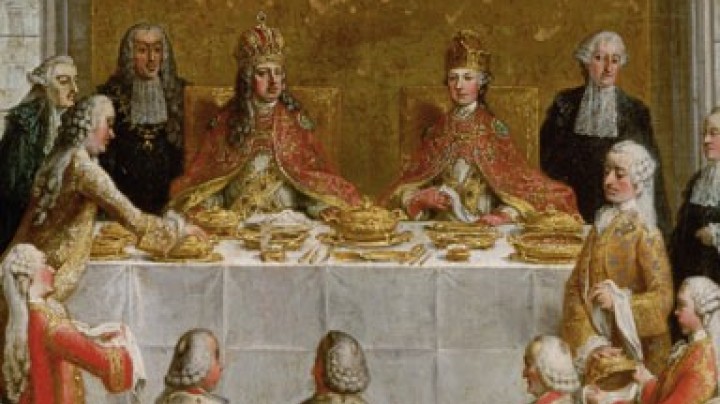A new venue: the Redoute Rooms
A new venue for festivities is built in the Hofburg: the Redoute Rooms, which have served as ballrooms since the time of Maria Theresa.
Joseph II only participated at court festivities out of a sense of duty, as Prince Khevenhüller-Metsch reported in his diary entry for 8 January 1775However, the Emperor did not appear at all at the beginning and only attended rarely in order to convince his lady mother, so one hears, that his allowing of masks had been effected not out of consideration for himself but solely for the delectation of the public.
In the reign of Maria Theresa, the two theatres in the Hofburg, which in the Baroque period had been the setting for magnificent operatic festivities, were unused as a result of economy measures. A partnership of aristocrats suggested to the empress that these rooms be adapted as ballrooms for the increasingly popular Redouten (masked balls) that were open to the general public. Maria Theresa agreed to the suggestion as she enjoyed dancing at balls herself and not least because the partnership was proposing to assume the costs of the enterprise.
Antonio Galli-Bibiena, the nephew of the architect who had designed the two theatres, supervised their remodelling as concert hall and ballrooms. Henceforth known as the Redoute Rooms, they could accommodate up to 3,000 people. They opened with a magnificent masked ball during the carnival season of 1748. After further remodelling from 1752 it became an annual tradition to hold a large-scale masked ball at carnival time, a tradition that endured until the end of the Monarchy. The rooms were also used for courtly festivities such as the nuptial celebrations for Emperor Joseph II and Isabella of Parma in 1760.
After the death of Franz Stephan of Lorraine there was a marked decrease in the number of festivities at court – they no longer gave Maria Theresa any pleasure, and Joseph II evinced no enthusiasm for these exclusive events. In 1772 he opened the Redoute Rooms for all classes; anybody might attend, regardless of rank. The rooms were used not only for dancing but also for playing cards, eating and drinking.
In the Biedermeier era the Redoute Balls at the Hofburg were the most exclusive events on the social calendar during the carnival season in Vienna. During the Congress of Vienna numerous balls were held here. The best orchestras in Vienna played, conducted a little later by such luminaries as Johann Strauss I and Joseph Lanner. The rooms were also used for court celebrations, concerts and theatrical performances. After the opening of the Redoute Rooms to the general public, some of the nobility took to giving private balls in their own palaces. Parallel to this a popular dancing culture emerged in the taverns of the suburbs: here balls for washermaids and cabbies took place at which – or so the legends of Old Vienna would have us believe – the Count danced with Fiaker-Milli, belle of the Cabbies’ Ball, rich and poor swaying together to the strains of the waltz. By contrast, only invitees could attend the annual Court Ball in the Redoute Rooms. This was one of the few official festive events hosted by Emperor Franz Joseph.





























